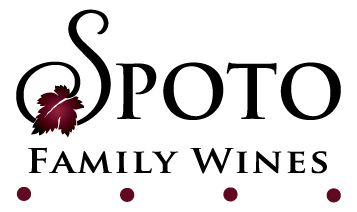The exciting thing about wine is that there are so many choices!
Ten dollar bottles of wine are readily available pretty much anywhere from the grocery store to wine stores and beyond. On the extreme other end, there are cult wines, high priced wines that are viewed as trophy wines to be collected or as investment wine to be held rather than consumed. Because price is often seen as an indicator of quality, sellers may adopt a premium pricing strategy where high prices are used to increase the desirability of such wines.
And that’s just pricing- the choices are endless. Additionally, there is the choice between red wine, white wine, rose’ and even dessert or sweet wine. Don’t forget the differences between regions where the grapes are grown that give the wine different flavor profiles. During fruit development the differences between rocky, volcanic, alluvial, sandy, silt or clay soils all contribute to enhancing grape color, flavor, aroma, and acidity.
Does the Napa region have the best soil, weather, growing conditions and is that why the wines are more costly? Does the cost of the land itself make these wines of higher value? Are we simply being snooty?
All good questions but here is a very interesting back story to cost of grapes across the state of California. In general, in California the average cost of a ton of Cabernet Sauvignon wine grapes is roughly $1,700/ton. Keep in mind that these are gross generalizations and fluctuations abound. To give you a visual of how much fruit that is, a ton of fruit is 2- 4x4 picking bins.
Breaking it down further, in Napa Valley the average cost of one ton of Cabernet Sauvignon fruit costs about $8,000/ton. In the highly respected appellation of Oakville within Napa Valley the cost of fruit ranges about $12,000- $18,000/ton. And to take it to the furthest level possible, a very specific historic vineyard within the Oakville American Viticultural Area (AVA) is called ToKalon. ToKalon is likely the most famous vineyard in the entire United States for multiple reasons. First, this highly coveted collection of artisan grapes are from a most historic vineyard raising a level between $20,000-$70,000/ton. ToKalon is Greek for “the place of highest beauty” and you can bet the people who are fortunate enough to be using these very treasured grapes and creating beautiful wines are producing a product that many would consider incredibly special. Spoto Family Wines include themselves as one of the privileged to utilize these grapes in our wine-making process.
So why are Napa wines so pricy and are they worth it? Going back over the last 50 years the interest in Napa has swelled, tourism has increased to atmospheric heights and a deluge of wineries have continued to pop up along the five-mile-wide and 30-mile long coastal region just an hour north of San Francisco. Tons of money is being pumped into Napa, and by the 1980s its popularity could not be ignored. In 1981, the U.S. government designated Napa Valley California’s first AVA, based on its unique microclimates, terrain, culture and history.
Napa is California’s fine wine region similar to that of France’s Burgundy. Winemakers are skilled artisans farming the land and then crafting wine into a product that will be appreciated. The process and result is a fluid that has been created entirely by hand. Artisan’s practice a craft and hold an aptitude reaching expressive levels of an artist. Often times the process of wine making has been handed down through the generations.
The attention to every detail in fashioning a wine that showcases the perfect balance is a stunning feat. To be an exceptional wine every component must be in harmony from the acidity, tannins, alcohol, sweetness and fruit concentration all have to be flawless.
Some folks like Brussel sprouts- others do not. What’s great about wine is that it a personal preference. Try some wines from the Napa AVA and compare them with others from various regions around the state. You be the judge!
So back to our question at hand. Are Napa wines really worth it? With all that goes into making a remarkable wine that people will remember for years to come, heck yeah- it’s worth it!!!
Concluding note: Mondavi originally owned the ToKalon vineyard and owned trademarks to ToKalon registered in 1988 and ToKalon Vineyard registered in 1994. Those trademarks have created a tangled web of problems that come down to one question: Is ToKalon a place or a brand? To read more check out: https://www.winespectator.com/articles/robert-mondavi-winery-sits-in-the-to-kalon-vineyard-its-owner-says-theres-no-such-place
*************************************************************************************************
The views expressed in these blogs are solely the opinion of the author and does not represent the views of others.
